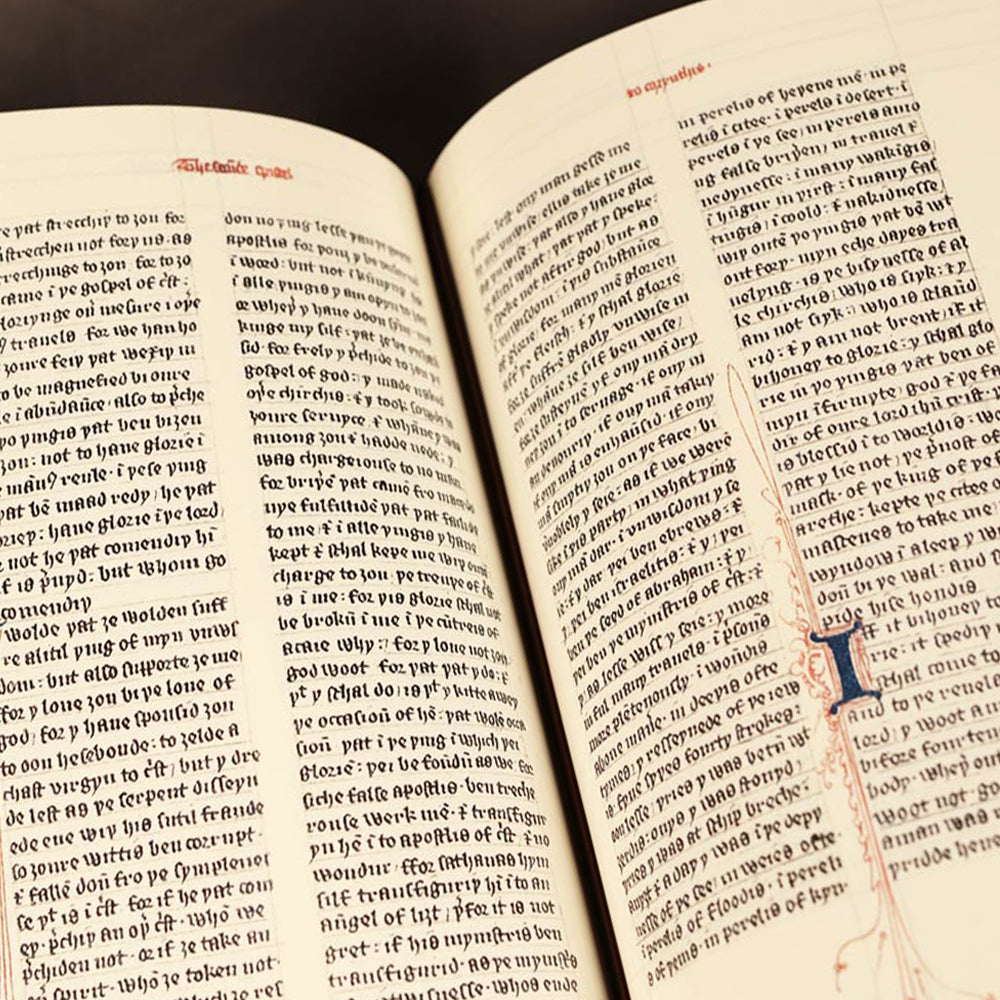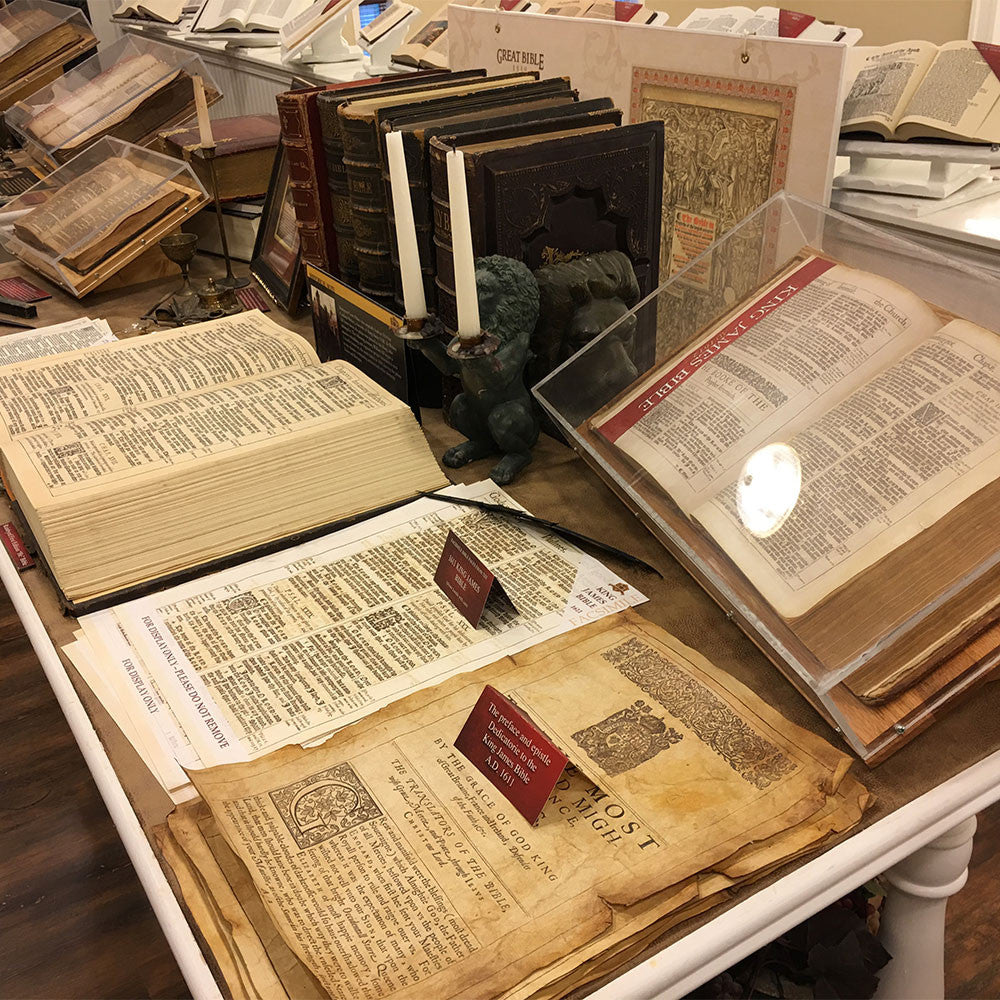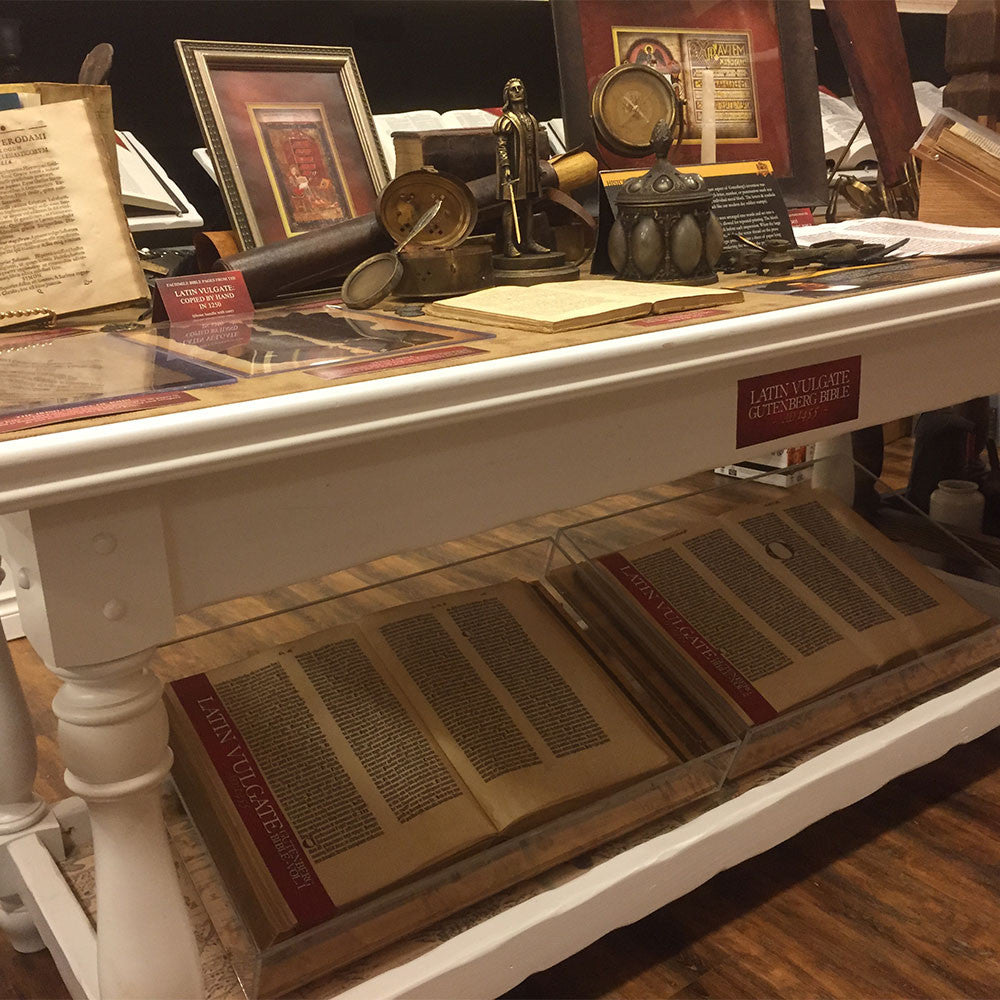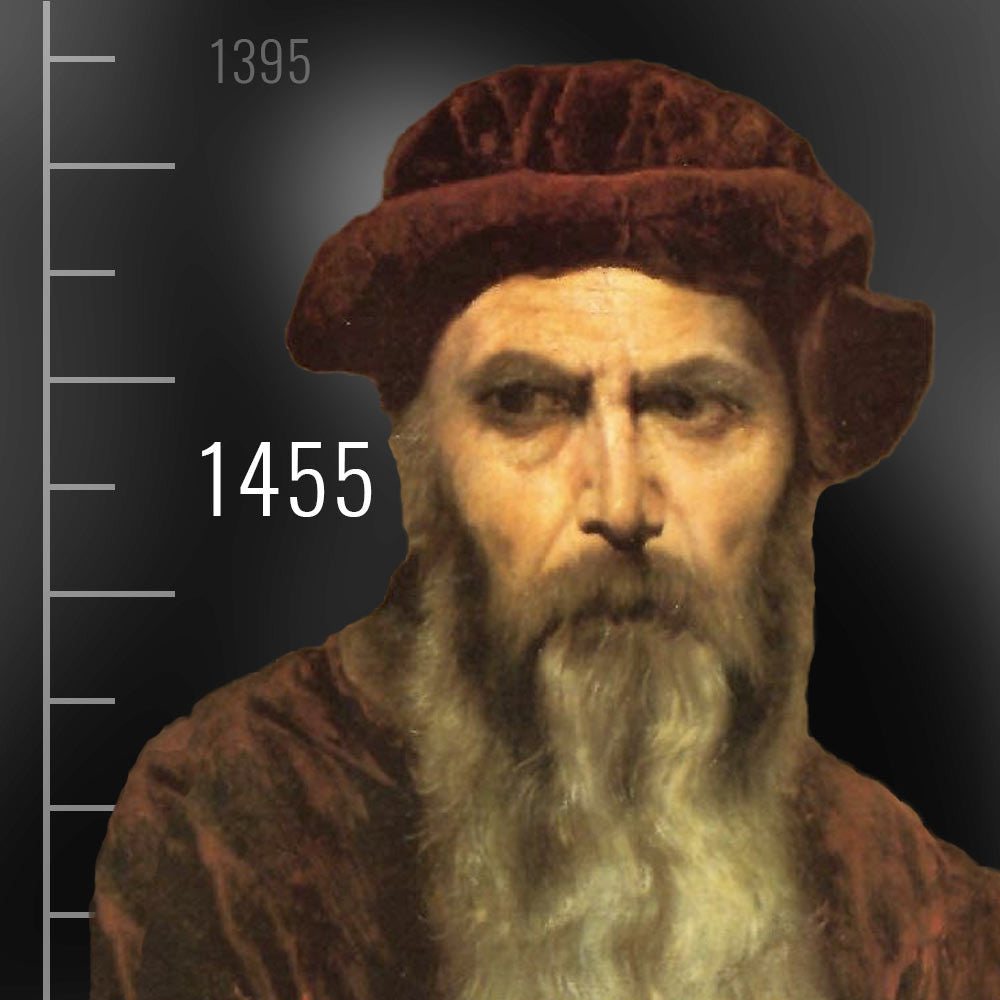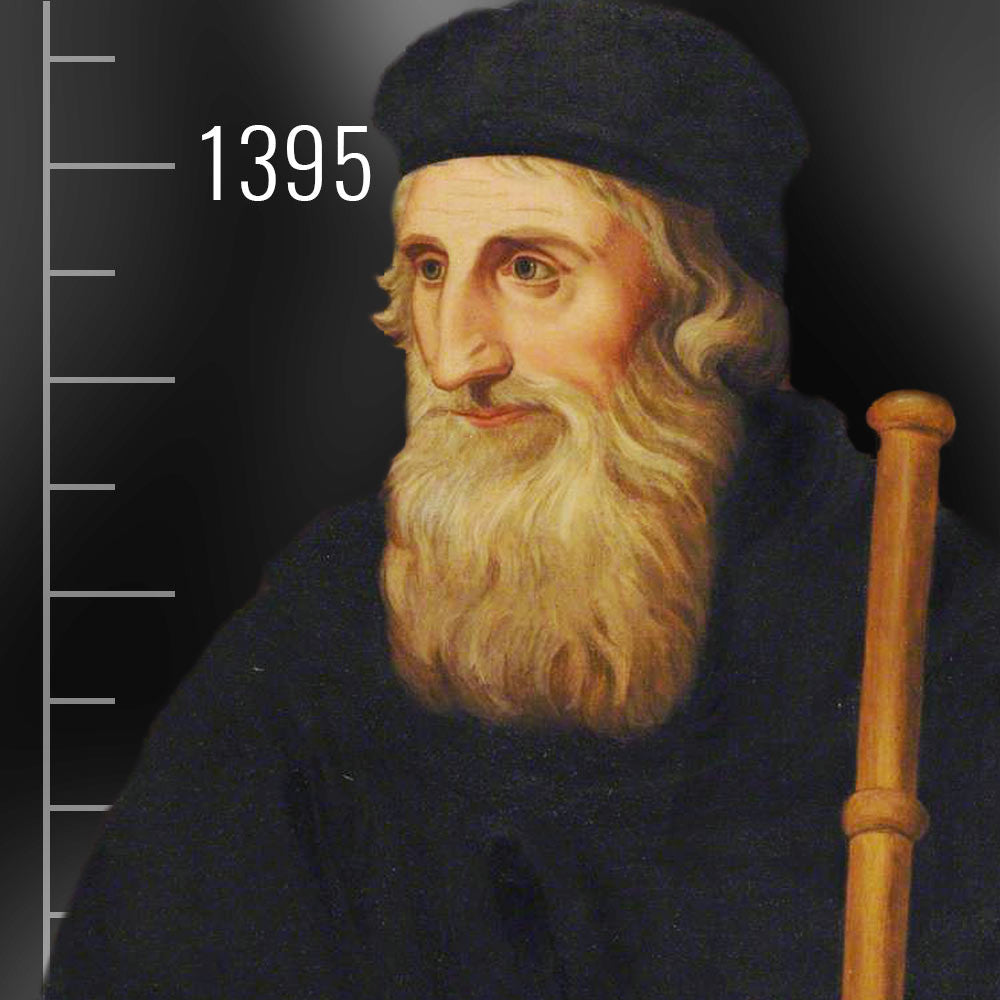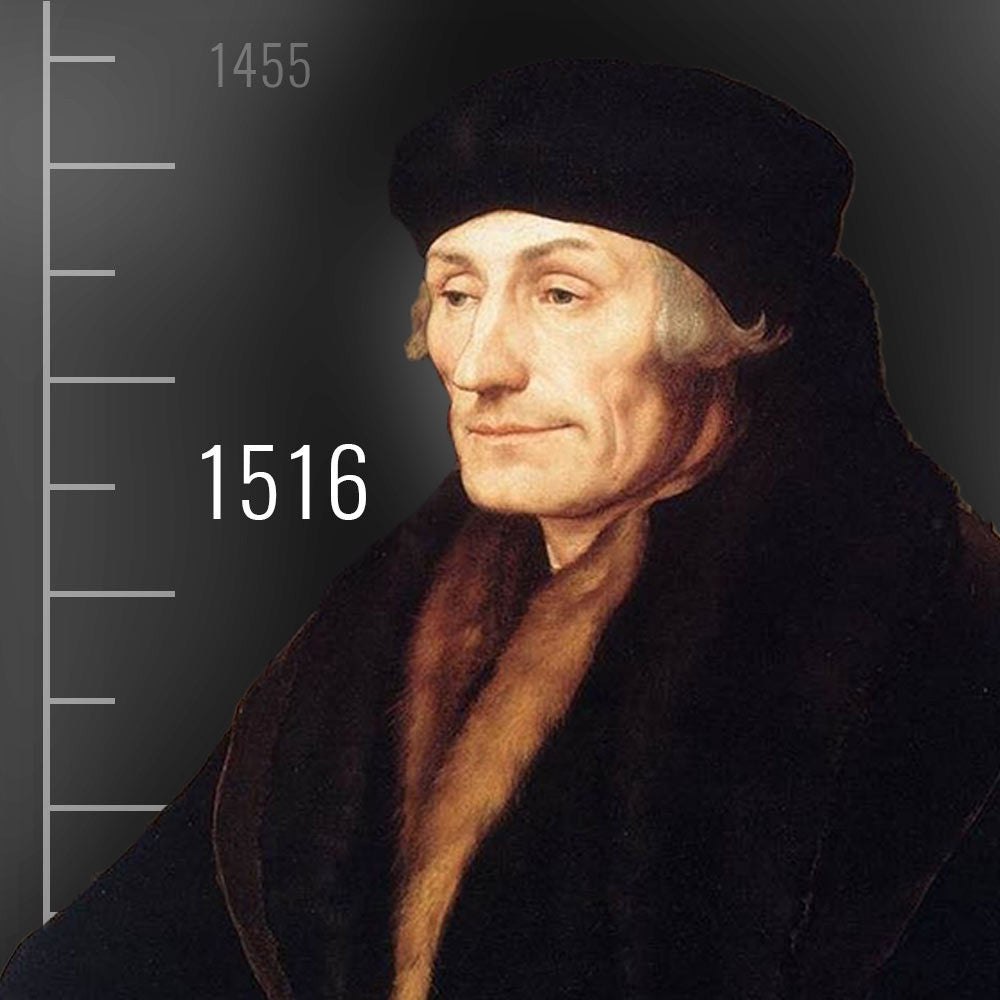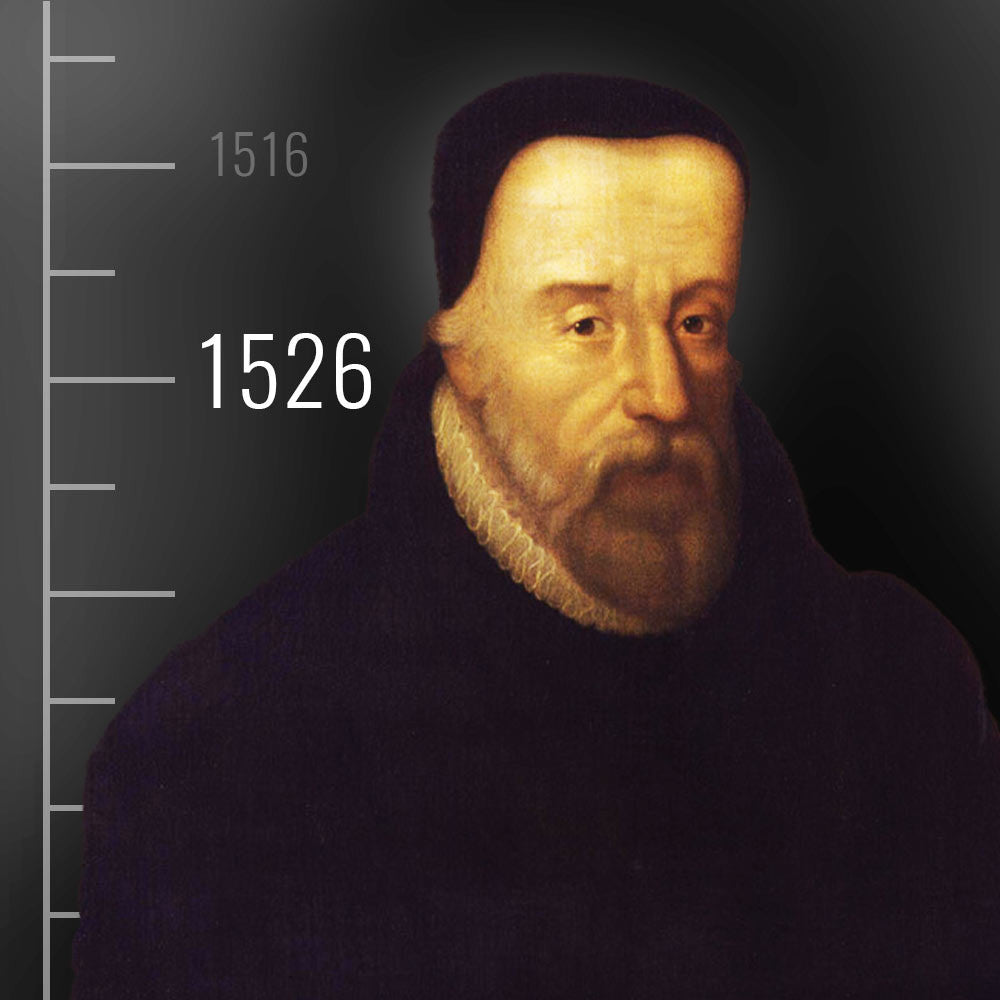Books as we know them today were extremely rare in the Middle Ages, and were highly treasured possessions. Until this point in history, reading material consisted entirely of handwritten manuscripts produced through painstakingly long hours of meticulous labor by trained scribes. Johannes Gutenberg’s invention of the movable type mechanical printing press forever changed that process, and revolutionized the course of communication and literature.
The first substantial book ever printed in the West was – appropriately – the most important book ever written: the Holy Bible (Biblia Sacra). Johannes Gutenberg, along with his partners, Johann Fust and Peter Schoffer, began printing this Bible around 1452 in Mainz, Germany and completed it around 1455. The text chosen was the standard Vulgate Latin of St. Jerome, the Biblia Latina. Officially it is “the 42-line Bible,” but it is affectionately and appropriately called “The Gutenberg Bible” – still one of the most beautiful books ever printed.
For the printing of the Bible, Gutenberg cut and cast particularly beautiful and fine typefaces, including not only the twenty-four large and small letters of the Latin alphabet, but also over two-hundred ninety different characters: forty-seven upper case and two-hundred forty-five lower case letters. His desire was to approximate the majestic splendor of the medieval manuscripts, and if possible, to accentuate their beauty even more through this new found art. As a result, the Gutenberg 42-line Bible had better proportions and harmony than any manuscript, even those so meticulously printed by the most proficient of scribes.
Gutenberg and the medieval printers practiced more of an art than a craft, lavishing great care and concern upon the printing of God’s Holy Word through the use of large and distinguished formatting, fine press work, creamy paper, and an elaborate Gothic typeface. After experimenting with several formats, the printers settled on a forty-two line page with two columns of type. Spaces were left for artistically placed capital letters and adjoining colorful embellishments. The purchasers were responsible for securing their own artist to enhance their personal copy with religious miniatures, dragons, peacocks, falcons, and an abundance of medieval flowers, making each copy of the original Gutenberg Bible individually unique as well.
“It is a press, certainly, but a press from which shall soon flow in inexhaustible streams the most abundant and most marvelous liquor that has ever flowed to relieve the thirst of man! Through it, God will spread His Word. A spring of truth shall flow from it: like a new star, it shall scatter the darkness of ignorance, and cause a light heretofore unknown to shine amongst men.” - Johannes Gutenberg

